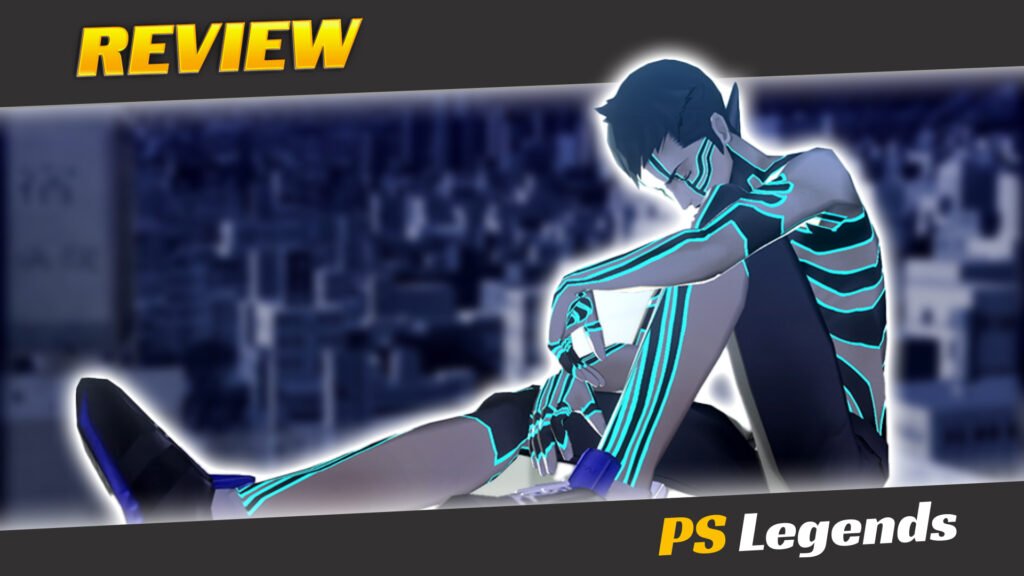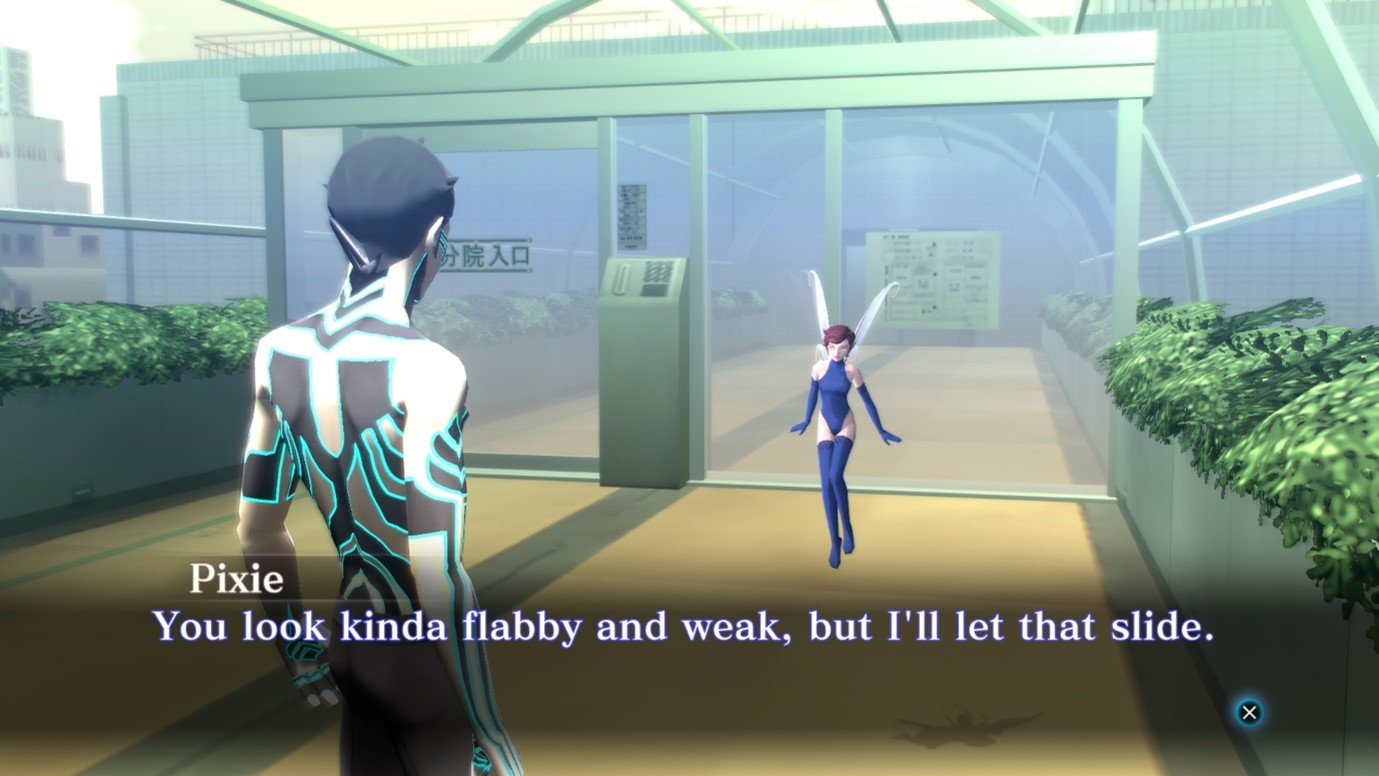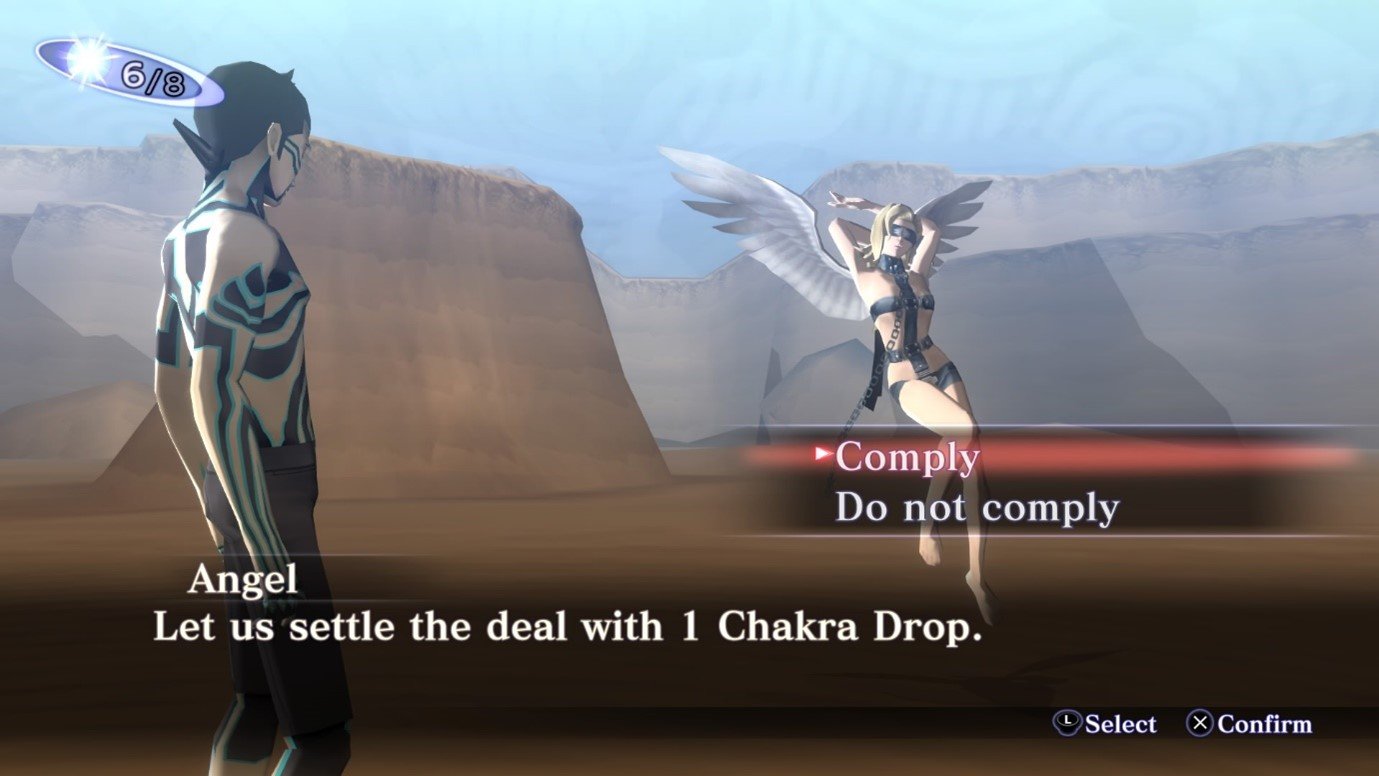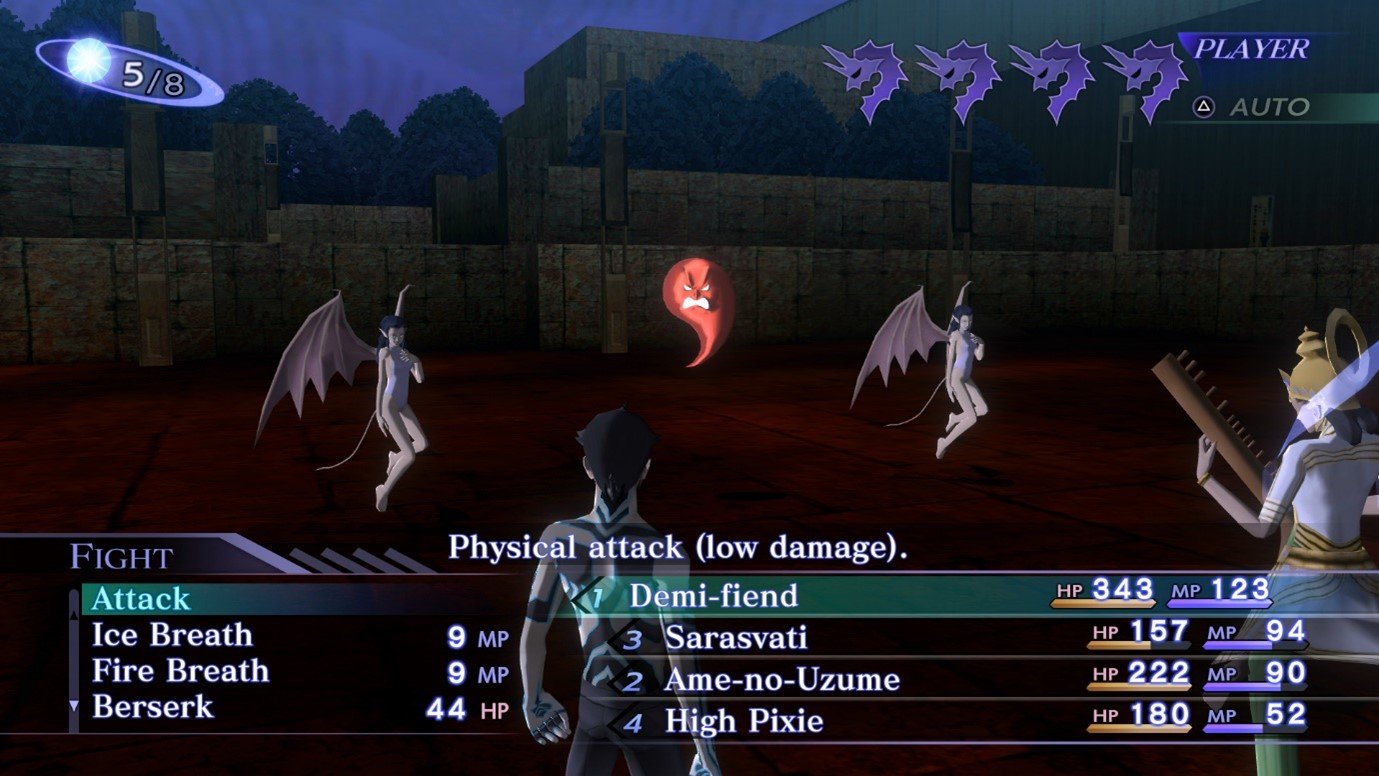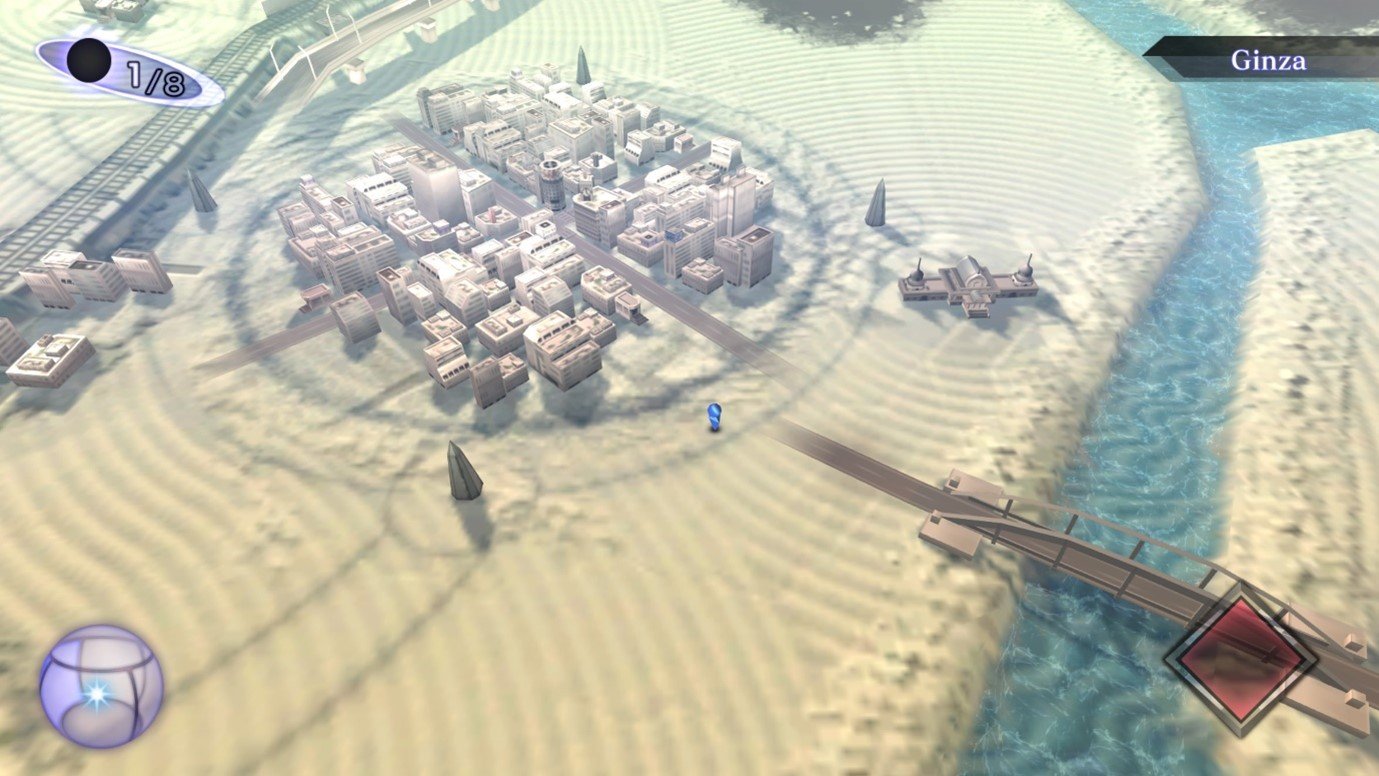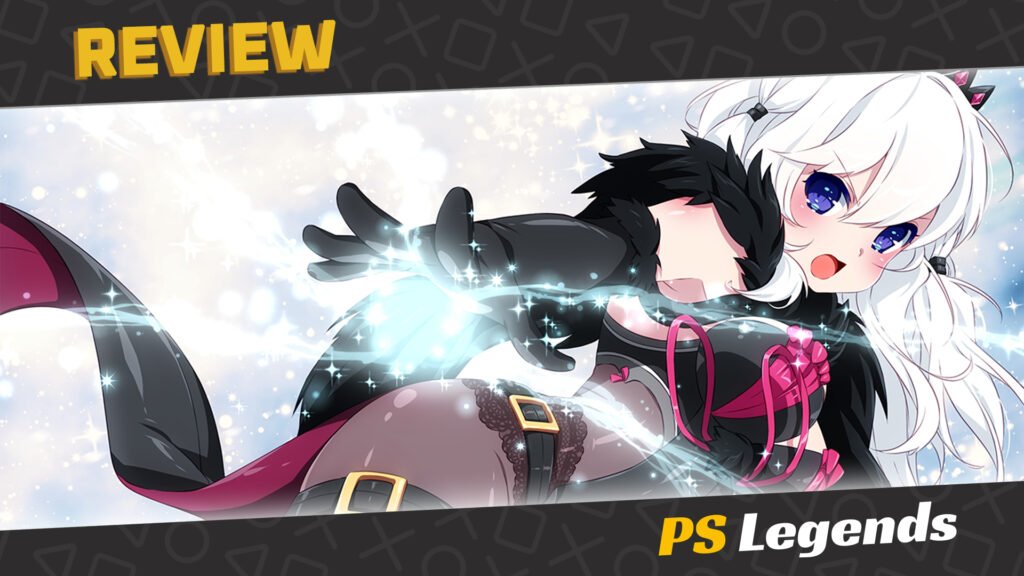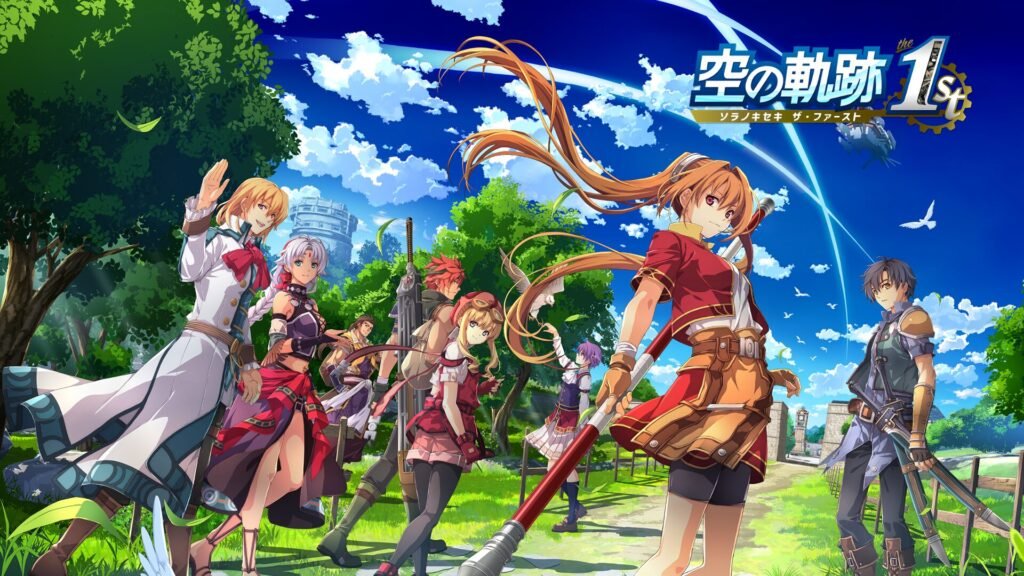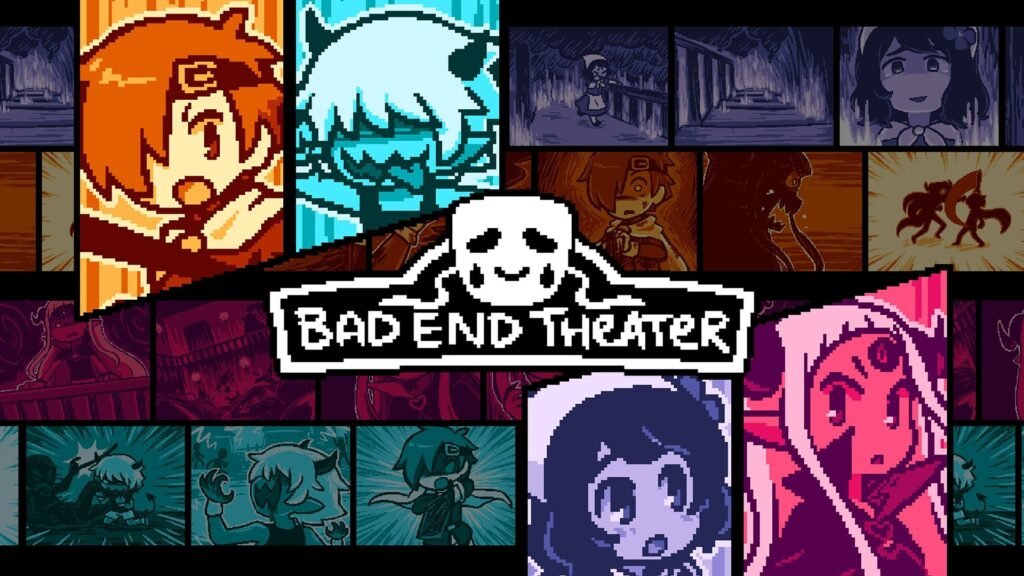I had a lot of respect for the Shin Megami Tensei games back in the PS2 era. Whilst I only managed to finish the stellar Digital Devil Saga due to always having some bigger release to prioritise (we were swamped with JRPGs back then) they stayed with me for quite some time. If you’re unfamiliar with the series, then Shin Megami Tensei is still around, but seems to have branched off into different directions on different consoles. Perhaps you’re familiar with the series which they evolved into on PlayStation, Persona.
On This Page
Introduction
Shin Megami Tensei 3: Nocturne (or Lucifer’s Call as it was originally called here in the UK) was a game with a tonne of potential, with over 400 demons based on genuine mythological figures to capture, train, and evolve, like a darker version of Pokémon, and a post-apocalyptic setting based on real-world Tokyo, it was a game that was always worth at least a look. Fusing every mythology together into a single narrative is an impressively ambitious concept.
It’s a pity the original game was pretty much unplayable with its obscenely high difficulty that even hours of grinding couldn’t fix. Like most, I couldn’t finish it. I even admit to cheat-coding the game with my trusty Action Replay device to max out my party’s stats, only to still have most of the end-game baddies crush my party like ants. It was a game which needed an extreme rebalancing, which thankfully it now has in the form of a PS4 Remaster, which grants quite the impressive overhaul.
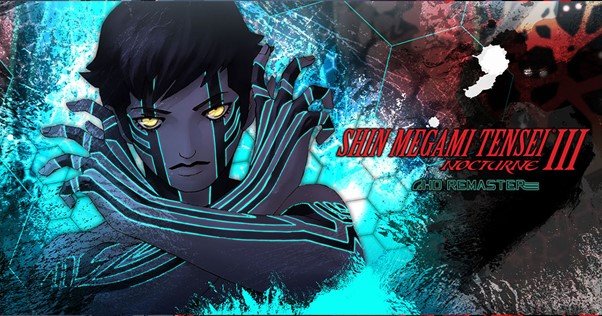
Story
The setting and events of Nocturne take place in a separate continuity to the rest of the Shin Megami Tensei series, though alternative versions of some established characters will appear as friends and foes. Nocturne is set in modern-day Tokyo, just before and during an apocalyptic event called the Conception, in which the normal world is destroyed through the actions of a cult to prevent the world’s stagnation and ultimate demise, as dictated by the ‘Great Will’ governing existence.
Tokyo is transformed into a fractured wasteland on the inside of a sphere inhabited by the spirits of humans who perished in the Conception, angels, demons, and other fantastical creatures who wage a war of supremacy with each other. There also exists Reasons, deity-like beings formed from the gathering of Magatsuhi energy by people with a deity or demon sponsor.
Those who possess Reasons seek to remake the world in their image by presenting themselves to Kagutsuchi, a semi-sentient manifestation of the Great Will’s power which exists to perpetuate the destruction and rebirth of worlds through Conception, proving their value. Another realm mentioned in the story is the Shadow Vortex, a limbo where dead worlds and the beings who created them linger.
The nameless main protagonist is the player character, generally dubbed the ‘Demi-fiend’. Several other characters survive the opening events of the game alongside him; many of them representing the various routes the player can choose to take. They are Yuko Takao, his teacher and a key figure in future events, his classmates Chiaki Hayasaka and Isamu Nitta, and Hikawa, leader of the Cult of Gaea and later the Assembly of Nihilo. Other characters include Jyoji Hijiri, a journalist the protagonist meets prior to the Conception and Futomimi, a powerful sub-human Manikin seeking to create his own Reason.
All of the game’s events are watched over by Lucifer, ruler of the demons and the Great Will’s sworn enemy, who takes on multiple forms during the story. Two additional characters from other games are included, but only one will appear; These are Raidou Kuzunoha, a lead character from the Shin Megami Tensei: Devil Summoner subseries, or depending on if the player purchases the DLC expansion or not, he will be replaced by the iconic demon-hunter Dante from the Devil May Cry franchise.

The game begins with the protagonist arriving in Tokyo to meet up with Chiaki and Isamu to visit Takao in a hospital. While in the city, the player learns of a confrontation between two cults which resulted in several deaths, and learns details of it from Hijiri when he meets them in the park where the event took place. Finding the hospital deserted apart from Chiaki and Isamu, the protagonist searches it, is briefly accosted by Lucifer, and is attacked by Hikawa.
Saved from Hikawa by Takao, the protagonist is taken by her to the hospital roof and witnesses the Conception, with Takao saying the resulting Vortex World will remain until the next creation is triggered. In the immediate aftermath, Lucifer contacts the protagonist again and infuses him with a symbiotic Magatama, wishing to see whether he can lead his armies against the Great Will. This turns the protagonist into the Demi-fiend, a being with the powers of a demon and the heart of a human.
After escaping from the hospital, the Demi-fiend begins exploring the Vortex World with help from Hijiri. He learns of two cults who seek to remake the world in their image: Hikawa’s Assembly of Nihilo, and an organisation called the Mantra Army. Unable to summon a Reason of his own due to his demonic transformation but not wanting a new world governed by nihilists, fanatics or beasts, the Demi-fiend will need to find, protect, and nurture Takao and his old friends, hoping one of them might still retain enough humanity to create an ideal world.
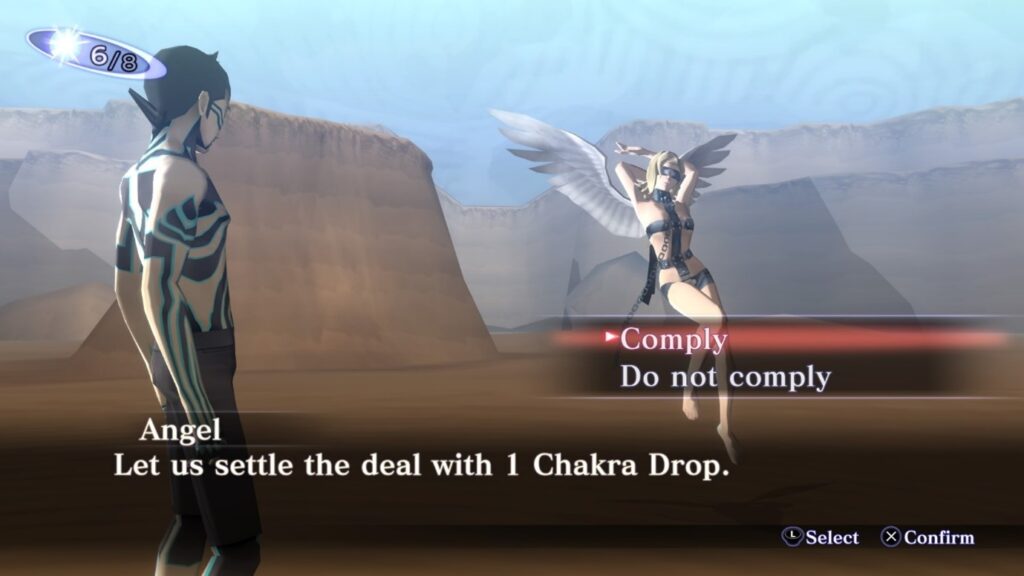
Gameplay
The player navigates the Vortex World through both a 2D world map, and to-scale 3D environments used in dungeons. While navigating the world map, the Demi-fiend’s party, and other non-playable characters (NPCs), interactive objects and landmarks are represented by symbols. These objects and NPCs include containers holding items, spirits that will heal the party, and a globe in the bottom left-hand corner of the screen showing the party’s approximate location on the world map.
During dungeon navigation, the Demi-fiend navigates multi-levelled areas. Different areas are accessed via doors, and as the Demi-fiend progresses, the area is automatically mapped. While exploring dungeons, the in-game camera can be freely rotated, and a ‘look’ action allows the player to see environments in first-person, not that there’s much to see in endless dark tunnels. The game world can be navigated either on foot or by using a fast-travel system unlocked at a certain point in the game.
Multiple important locations are found within the world. These include Terminals that give access to a fast-travel system, the Junk Shop, which acts as a vendor for buying and selling items, Rag’s Jewelry, where gems collected during gameplay can be traded for rare items and unique demons, and the Fountain of Life, where the protagonist and other party members can receive treatment for ailments, heal them of damage, or revive characters knocked out in battle.
An optional location separate from the Vortex World is the Amala Labyrinth, accessed after the Demi-fiend has reached a certain point in the story. The Labyrinth is a dungeon divided into multiple floors know as ‘Kalpa’, each housing both demon enemies and dealers who will sell demons to you. Each Kalpa is connected by a Warp Zone in which the Demi-fiend can collect currency and items while avoiding or destroying obstacles. Proceeding through the levels of the Labyrinth requires the protagonist to find and fight Fiends carrying Candelabra, which unlock barriers. The Candelabra also act as a means of locating and either engaging or avoiding Fiends.
During navigation, an indicator in the bottom right-hand corner of the screen indicates the presence of enemies and the likelihood of a battle being triggered. An indicator in the top left-hand corner also shows the current ‘phase’ of Kagutsuchi, a moon/star-like object hovering in the sky of the Vortex World which shifts its phase as you explore.
Your battle party consists of the Demi-fiend and up to three allied creatures. Standard battles are initiated through random encounters, which trigger a transition into a dedicated battle arena. At the end of battles, the party gains experience points and Macca, the in-game currency. Party members will level up when enough experience points have been gathered. Upon levelling up, the statistics of allied demons are randomly raised, while the Demi-fiend’s stats can be customized by the player.
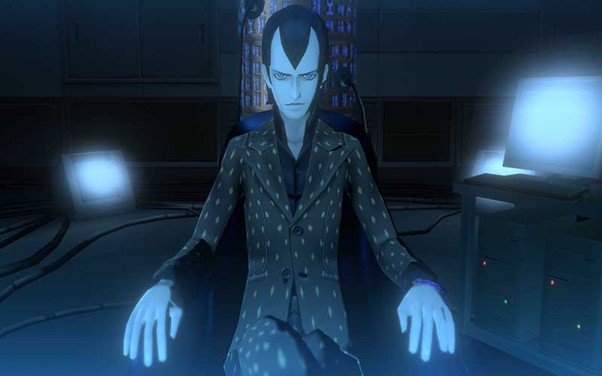
The Demi-fiend’s abilities and resistances are also influenced by equipping one of 24 different Magatama found in the game and can also learn new skills from equipped Magatama when he levels up, also granting passive buffs and debuffs which take effect in battle.
Battles are turn-based. Each character participating in combat, friend, and foe alike, takes one action per turn. Any action, such as attacking, using skills or items, or communicating with demons, will normally cost one full turn. If a combatant scores a critical hit, exploits their opponent’s weakness, or passes on making an action, they gain an additional turn marked by a pulsing icon.
These added turns allow characters to perform all actions available within normal turns. If the player chooses to pass on an additional turn, that turn is lost. Characters can escape from normal battles, with failure forfeiting a player turn. If the main character loses all health, the game ends, regardless of the status of his demons.
A key element related to battles is demon negotiation, the process by which new demons are invited to join the party as allies and can fight alongside the Demi-fiend. The majority of demons can be talked to in battle and negotiated with. After selecting the option to talk, the player selects a demon, which initiates a negotiation. For those demons who can talk, the responses vary by both situation and a demon’s temperament.
Some demons can be bribed with Macca and items, some will ask questions related to subjects like philosophy, while others can be influenced by the protagonist’s skill at eloquence. A negotiation can fail if the wrong responses are chosen, if the party’s roster is full, or if another enemy demon interrupts. When in the party, demons can be summoned or dismissed from battle. The level of assigned Magatama can also affect how negotiation goes.
In addition to recruiting in battle, new demons are acquired through fusion at a location called the Cathedral of Shadows. Normally, two demons can be fused at once, but under certain conditions, more demons can be fused together. Fusions can produce a variety of results based on various circumstances, such as the current phase of Kagutsuchi and the addition of certain items.
When in the Cathedral of Shadows, the player can select two demons, viewing a preview of the resultant demon, then initiate a fusion. The resultant demon will both possess its own skills and inherit skills from both ‘parents’. Skill inheritance is randomised. Higher-level demons produce more powerful fusions. Demons gained through negotiation or fusion are automatically stored in the Demon Compendium, a record kept within the Cathedral of Shadows. The Demi-fiend can also pay to summon a demon from the Compendium, returning it to his ranks.
Unfortunately, demon fusion is mandatory for surviving battles, and not really something that can wait until later when you’re in the mood to play around with mechanics which may feel entirely new and intimidating to first-time players. No matter how much time and effort you put into training and levelling up early-game demons, you’ll soon find that their stats and skills are hopelessly outclassed by later-game enemies. Fortunately, help is available now.
The game’s new Merciful difficulty mode reduces the damage output and accuracy of your enemies. It also boosts experience received whilst lowering the encounter rates, making for better progression than before, at least for a while.
After a dozen hours or so, the cracks start to show, not from the quality of the remake, but with the original core gameplay, specifically the level design. It’s a long, slow grind of a game. Each dungeon sees you navigate an area of Tokyo to progress, yet this is easier said than done. Usual travel from ‘A to B’ to find a key, item, or enemy of some sort, then off to ‘C’ to clear the area is standard fare, yet each dungeon is bigger than the last, with many not being possible to clear in a single sitting.
This isn’t helped by the increasing number of obstacles placed in your way, and whilst the Merciful difficulty setting helps reduce enemy encounters, it does nothing to clear poisonous traps on the floors, impassible dark corridors, pit-falls, and multi-floor mazes that require hours of trial and error to pass through. It almost feels like the game doesn’t want you to progress, with each labyrinth throwing more time-consuming challenges your way.
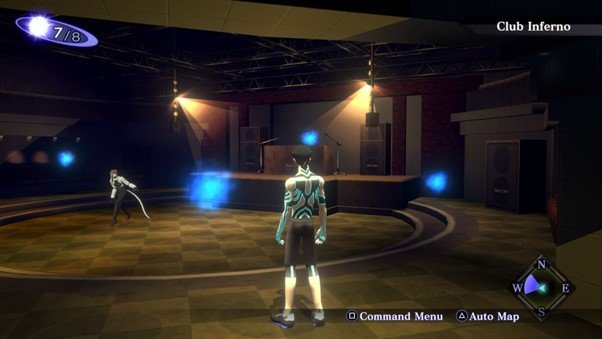
Graphics/Sound
The presentation overhaul implemented in this remaster is genuinely excellent. The upscaled HD visuals make characters crisper and brighter, though you’re likely to find a few minimalist enemies. You’ll also find reduced blur and clearer blacks used throughout the dark environments.
The catchy rock soundtrack with elements of thrash metal return and dominate all other aspects of the game, and they do so incredibly well. We also now have the surprising but very welcome addition of voice acting, making one hell of a polished package. The effort made to revamp the previous game is astounding.
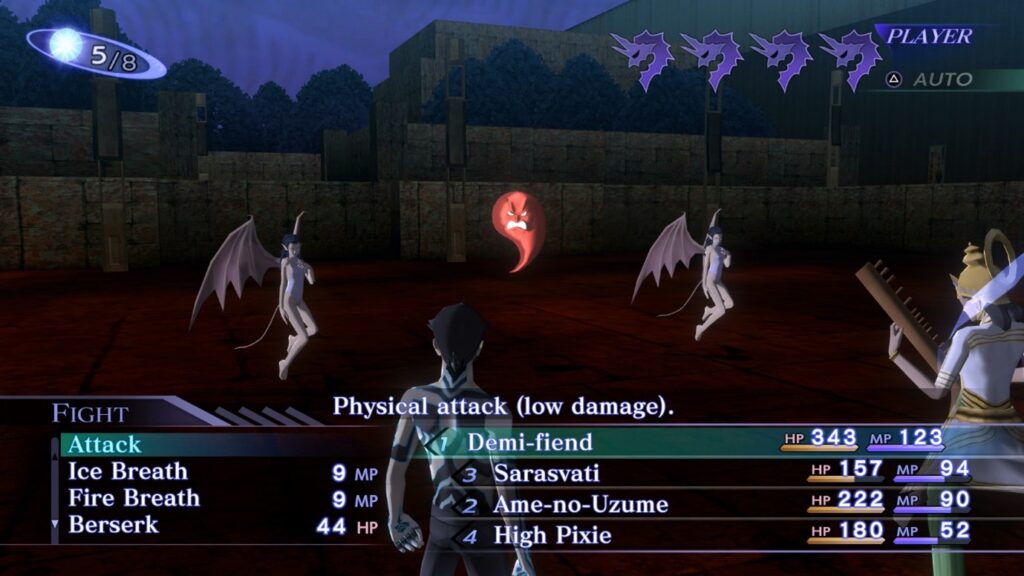
Conclusion
I really had high hopes for Nocturne this time, enough that I paid full retail price for it (something I rarely do these days) only to be rather disappointed. It’s a stunning remake, yes, but it’s still the same, unplayable game underneath the fresh paint-job and kick-ass soundtrack. It entertains for a little while but there’s no hope of a platinum here or even true completion, at least for me.
I was pulling my hair out with the game’s optional yet still narrative-important Labyrinth of Amala. After losing hours of progress from a game-over within one such labyrinth and little progress made in the main story dungeons I finally realised I wasn’t having fun anymore and it was a good time to give up on the game, yet I persevered just long enough to reach the incredibly long, multi-floor, final dungeon. I had some sliver of closure, but not much else.
It’s a shame after such a promising start. There’s a superb story here which is often lost behind hours and hours of repetitive, overcomplicated gameplay. The post-apocalyptic theme combined with a return of demons and beasts is a genre that’s been done before with much better results, not so much in a game, but in several impressive anime movies such as Violence Jack and the Urotsukidoji saga. It’s a step in the right direction but still anything but user-friendly.
Joys
- Visual upgrade
- Voice acting now included
- Same fantastic soundtrack
Cons
- Major progression issues
- Dungeons too long
- Disregards player party setup choice
